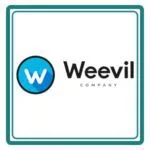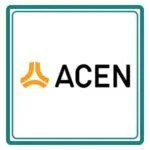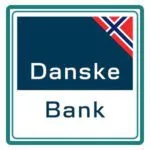CE MARK Certification in Nairobi
Get Free Consultation
PopularCert offers professional CE Mark certification services in Nairobi, helping manufacturers comply with essential European safety, health, and environmental requirements for product exports. CE Mark certification in Nairobi enables companies in key industrial areas like Westlands, Industrial Area, and Embakasi to access the European Economic Area (EEA) market with confidence. As Kenya’s export sector grows, more businesses are turning to CE compliance, reflecting a rising demand for globally accepted quality marks. We also assist with related standards like ISO 9001 (Quality Management) and ISO 13485 (Medical Devices), ensuring your products meet both local and international benchmarks.
What Is CE Mark Certification?
CE Mark Certification indicates that a product meets European Union (EU) safety, health, and environmental protection standards. It is mandatory for many products sold within the European Economic Area (EEA). By affixing the CE mark, manufacturers declare compliance with EU regulations, enabling easier access to European markets and enhancing consumer trust in the product’s safety and quality.
Why is CE Marking Important for Businesses in Nairobi?
- In Nairobi’s evolving business scene, CE Marking has become a gateway for companies aiming to export to European markets. It signifies that a product complies with essential EU standards for safety, health, and environmental protection, making it easier to gain trust and approval from international buyers, distributors, and regulatory bodies.
- For manufacturers and traders in Kenya, CE Marking is more than just a symbol, it’s a strategic asset. It boosts product credibility, helps avoid border delays, and builds a competitive edge globally. Whether you’re in electronics, construction, or consumer goods, having CE certification can open up broader opportunities, especially in the European Economic Area (EEA), where regulatory compliance is non-negotiable.
How to Get CE MARK Certification In Nairobi?

Process to Get CE MARK Certification In Nairobi
CE Mark Requirements
The companies must primarily understand what all it takes to apply the ‘CE’ mark for the sale of their products within that region. This goes in tandem with understanding EU directives and standards applied.
Product Assessment
The product will have to be assessed against EU regulations setting out the essential health and safety and environment standards that a product must meet. This could include product testing, risk assessment, and review of technical documentation.
Technical Documentation
Organize all the relevant technical documents needed to obtain certification with a CE Mark, including product specifications, design drawings, details of the manufacturing process involved, the report on conformity assessment, and instructions for use by end-users.
Risk Management
Do a risk assessment, whereby any threats associated with the product can be identified and safety measures applied to help ensure that it is safe.
Labeling and marking
The product shall be properly labeled and bear the CE Marking, which indicates that the product has gone through the assessment process and complies with EU requirements.
Benefits of CE MARK Certification In Nairobi
- Access to European Market: CE Mark certification is required for products sold in the European Economic Area (EEA). It allows companies in Nairobi to market their products across EU member states, expanding their reach internationally.
- Enhanced Product Credibility: Having the CE mark on your product signals to consumers, partners, and regulatory bodies that your product meets EU health, safety, and environmental standards, building trust and confidence.
- Legal Compliance: CE Marking demonstrates compliance with EU regulations, ensuring that your product adheres to the necessary safety and quality standards required by law, reducing the risk of legal issues or penalties.
- Increased Market Competitiveness: Obtaining CE certification can differentiate your products from competitors. It shows that you are committed to quality, which can help attract customers who prioritize safety and reliability.
- Improved International Trade: The CE mark is recognized worldwide as a symbol of quality and safety. This can enhance your business's reputation on a global scale, making it easier to enter markets outside of the EU, such as Africa and the Middle East.
- Risk Mitigation: CE Marking requires thorough product testing and evaluation, which helps identify and resolve safety or performance issues early in the design process, reducing potential risks for your company and consumers.
Types Of ISO Certification In Nairobi
Get Free Consultation
Our Clients


















Cost Of CE Mark Certification In Nairobi
The cost of CE Mark Certification in Nairobi depends on several key factors such as product type, technical requirements, and documentation scope. Businesses often look for the best CE certification company in Nairobi to ensure smooth and compliant certification.
Common cost-influencing elements include:
- Product complexity and risk category
- EU directives and standards applicable
- Testing and conformity assessment needs
- Number of product variants or models
- Technical file and documentation preparation
- Whether a Notified Body review is required
- Internal quality controls and audits
- Professional fees of CE consultants
To get accurate pricing, it’s best to request a free CE consultation in Nairobi. Our team helps you navigate the cost of CE certification in Nairobi with transparency and tailored guidance.
Why Choose PopularCert For CE Mark Certification In Nairobi?
PopularCert supports businesses in Nairobi with reliable CE Mark certification services, helping you comply with European product regulations. Our experienced CE Mark consultants in Nairobi guide you through the process, from product testing to technical documentation, ensuring smooth entry into international markets. We make product certification in Nairobi simple and efficient.
- Expert help with CE Mark certification in Nairobi
- Customized compliance solutions for your product type
- Timely assistance with technical files and documentation
- End-to-end coordination with EU-notified bodies
- Trusted partner for product certification in Nairobi across industries
PopularCert ensures your products meet European standards and win customer trust worldwide.
GET A FREE CONSULTATION NOW
FAQ
What is the cost of CE Mark certification in Nairobi?
The cost of CE Mark certification in Nairobi varies depending on your product type, testing requirements, and documentation status. At PopularCert, we provide clear and affordable pricing tailored to your business needs, with no hidden charges. We also offer a free consultation to help you estimate your total certification cost.
Who provides CE Mark certification services in Nairobi?
Several certification bodies operate in Nairobi, but choosing the right consultant ensures a smooth process. PopularCert is a trusted name in Nairobi for CE Mark certification, helping businesses meet European regulatory standards with expert guidance, testing support, and complete technical documentation assistance.
How long does it take to get CE Mark certification in Nairobi?
The CE Mark certification timeline in Nairobi usually ranges from a few weeks to a couple of months, depending on product complexity and readiness. PopularCert works closely with your team to streamline the process and ensure fast, accurate compliance with EU requirements.
Why is CE Mark certification important for businesses in Nairobi?
For Nairobi-based businesses aiming to export to Europe, CE Mark certification is essential. It shows that your product meets EU safety, health, and environmental standards. PopularCert helps you achieve CE compliance confidently, opening the door to new markets and boosting your brand’s credibility overseas.
